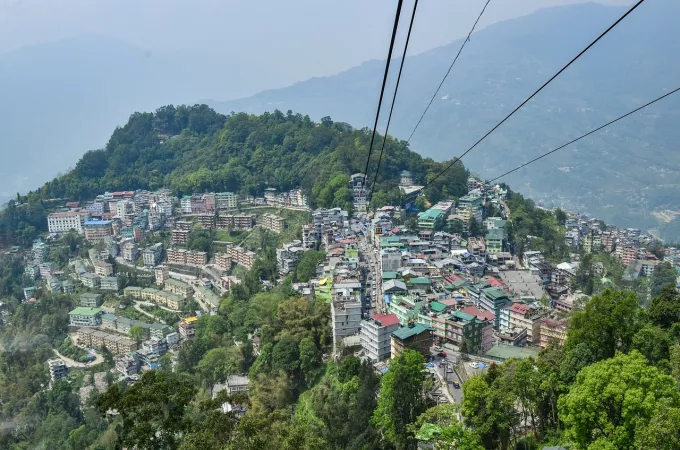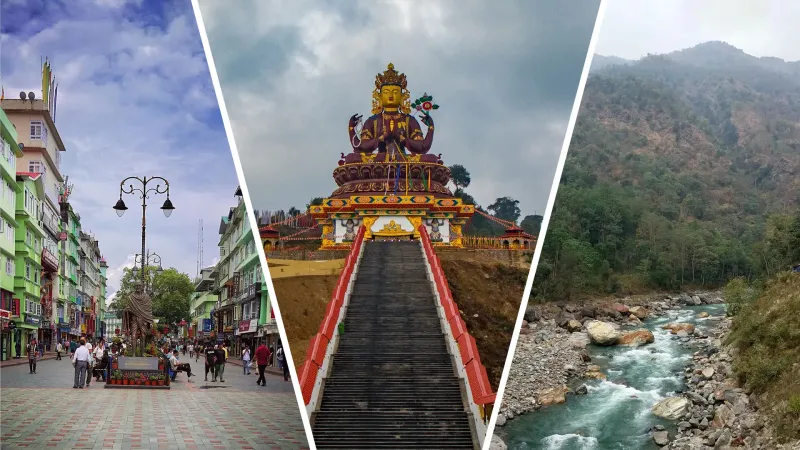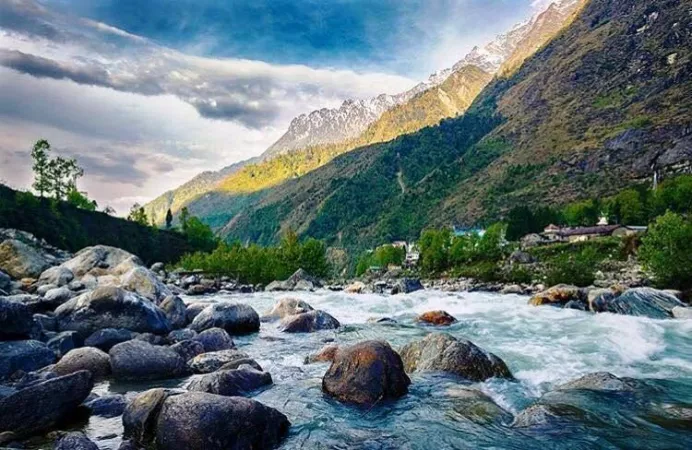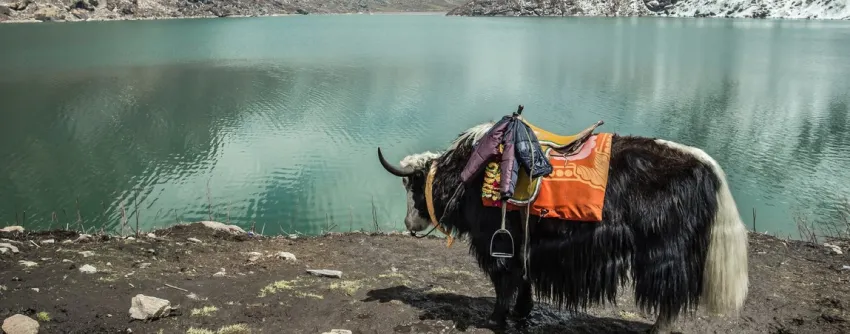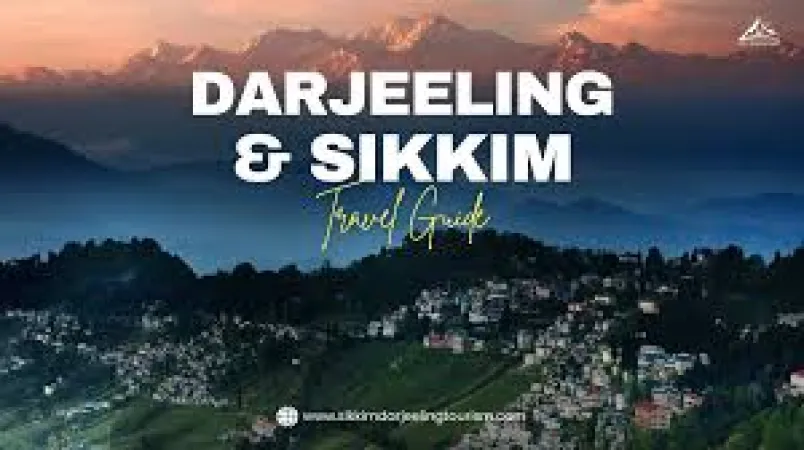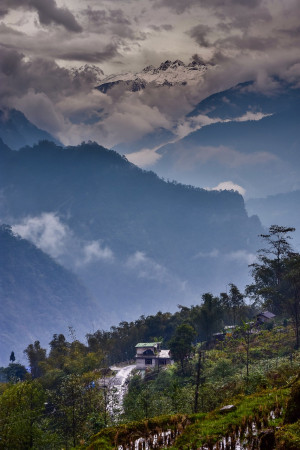Hi User
Navigation
Gangtok Travel Guide
Gangtok, the capital city of Sikkim in India, is a picturesque hill station nestled in the Himalayas. Known for its stunning mountain views, Buddhist monasteries, and vibrant culture, Gangtok attracts travelers from all around the world. The city holds historical significance as a prominent center for Tibetan Buddhism and offers a unique blend of traditional Sikkimese culture with modern influences.Top Attractions in Gangtok
- Rumtek Monastery
- Nathula Pass
- Tsomgo Lake
- MG Marg
- Banjhakri Falls
Gangtok is Famous for
Gangtok is most famous for its breathtaking views of the Kanchenjunga mountain range and its serene Buddhist monasteries.Top Attractions in Gangtok
- Explore the Enchey Monastery
- Indulge in adventure sports at the Banjhakri Falls
- Shop for local handicrafts at MG Marg
- Enjoy a yak ride at Tsomgo Lake
- Visit the Hanuman Tok viewpoint for panoramic views
What's Great about Travelling to Gangtok?
- Perfect destination for nature lovers
- Rich cultural experiences
- Great for adventure enthusiasts
What's Not So Great about Travelling Gangtok?
- High-altitude location may cause altitude sickness
- Limited public transportation options
- Can get crowded during peak tourist seasons
Travel Tips for Gangtok
- Obtain necessary permits for visiting restricted areas
- Book accommodations in advance, especially during peak season
- Respect the local customs and traditions
Important Gangtok trip information
- Ideal Duration: 4-7 days to explore the city and nearby attractions
- Best Time to Visit: March to May and October to December for pleasant weather
- Nearby Airports and Railway Stations: The nearest airport is Bagdogra Airport, and the closest railway station is New Jalpaiguri Railway Station
7 days & 6 nights
4.6 (37)
LD_512988_5N/6D North East Sikkim Package_AP_ 6 Adults_3star
Gangtok
Tour package by Purba Holidays
Verified Trustseal
INR 23,571 SAVE INR 7,071
INR 16,500 /Adult
3 days & 2 nights
4.8 (105)
2 Night Gangtok Package
Gangtok
Tour package by The Sikkim Tours
Verified
INR 22,500 SAVE INR 4,500
INR 18,000 /Adult
4 days & 3 nights
5 (49)
Sikkim Tour Package 3N 4D
Gangtok
Tour package by Z star holidays
Verified
INR 39,600 /Adult
7 days & 6 nights
4.6 (37)
GANGTOK WITH NORTH SIKKIM - 5N6D-Meal Plan MAP
3D Gangtok • 4D Sikkim
Tour package by Purba Holidays
Verified Trustseal
INR 14,300 /Adult
7 days & 6 nights
4.1 (37)
Best Gangtok - Lachen - Lachung - 6N7D
3D Gangtok • 4D Sikkim
Tour package by YATRACO
Verified
INR 39,444 SAVE INR 3,944
INR 35,500 /Adult
7 days & 6 nights
4.6 (37)
GANGTOK WITH NORTH SIKKIM - 5N6D-Meal Plan MAP [Based on 2 Adults]
3D Gangtok • 4D Sikkim
Tour package by Purba Holidays
Verified Trustseal
INR 24,800 /Adult
FAQ's on Gangtok
Q1: What is the best time to visit Gangtok?
The best time to visit Gangtok is from March to May and October to December. During these months, the weather is pleasant with clear skies, making it ideal for sightseeing and outdoor activities. Avoid the monsoon season from June to September when heavy rainfall can lead to landslides and road closures. Winter months from January to February can be chilly but offer a unique experience with snowfall in some areas.
Q2: Do I need a visa to travel to Gangtok?
All foreign nationals require a valid Indian visa to travel to Gangtok as it is a part of India. Make sure to check visa requirements based on your nationality and apply for the appropriate visa before your trip. Some countries may be eligible for e-visas or visa on arrival, but it is essential to confirm this beforehand.
Q3: What are the must-visit attractions in Gangtok?
Gangtok boasts a range of must-visit attractions, including the iconic Tsomgo Lake, Rumtek Monastery, Nathula Pass, and MG Marg for shopping and local cuisine. Explore the Enchey Monastery, Banjhakri Falls, Hanuman Tok, and Tashi View Point for breathtaking views of the Himalayas. Don't miss a visit to the Flower Exhibition Centre and the Namgyal Institute of Tibetology for a glimpse into the region's culture and heritage.
Q4: Is Gangtok a safe place to travel?
Gangtok is generally considered safe for tourists. However, like any other destination, it is essential to stay cautious and aware of your surroundings. Avoid isolated areas at night, take necessary precautions against altitude sickness, and follow local regulations. Be mindful of pickpockets in crowded areas and keep your belongings secure. Overall, Gangtok is a peaceful and welcoming destination for travelers.
Q5: What is the local currency in Gangtok and can I use credit cards?
The local currency in Gangtok is the Indian Rupee (INR). ATMs are readily available in the city, especially around popular tourist spots and markets. While major hotels, restaurants, and shops accept credit cards, it is advisable to carry some cash for smaller establishments and local markets. Inform your bank about your travel plans to ensure smooth card transactions and check for any international transaction fees.
Q6: What is the local cuisine like in Gangtok?
Gangtok offers a diverse culinary experience with a blend of Nepalese, Tibetan, and Sikkimese flavors. Try traditional dishes like Thukpa (noodle soup), Momos (dumplings), Gundruk, Sinki, and Phagshapa for an authentic taste of the region. Don't miss out on Churpee (local cheese), Sel Roti, and Tongba (millet-based alcoholic beverage) for a unique gastronomic adventure. Vegetarian and non-vegetarian options are available, catering to different dietary preferences. Embrace the local tea culture with a cup of Chhang (local beer) or Butter Tea while enjoying the picturesque surroundings.
Q7: What transportation options are available in Gangtok?
In Gangtok, transportation options include taxis, shared jeeps, and rental cars for exploring the city and nearby attractions. Public buses and auto-rickshaws are also available for short distances within the city. To visit remote areas or higher altitudes, hiring a local guide or joining organized tours is recommended. Shared taxis are a common mode of transport for traveling between towns and neighboring states. Make sure to negotiate fares beforehand and confirm the route with the driver. Renting a bike or scooter can be a convenient way to explore Gangtok at your own pace, but be cautious on the hilly terrains.
Q8: Are there any cultural norms or etiquette I should be aware of when visiting Gangtok?
When visiting Gangtok, respect the local customs and traditions by dressing modestly, especially when visiting religious sites and monasteries. Remove your shoes before entering temples or homes and seek permission before taking photographs of people or religious artifacts. Greet locals with a Namaste and show courtesy in your interactions. Avoid public displays of affection and loud behavior, as it may be considered disrespectful. Do not litter and help in preserving the natural beauty of the region. Participate in local festivals and events with an open mind to immerse yourself in the rich culture of Gangtok. By showing respect and understanding, you can have a memorable and meaningful travel experience in this charming destination.
Q9: I am a travel agent. How can I buy travel leads of Gangtok?
Register yourself as a travel agent at agents.tripclap.com and then you can buy travel leads to Gangtok once your account is approved. For more details contact our support team at +91-8069186564 or support@tripclap.com
Certified
We accept (more)
Members of
Media Recognition
Trusted Partners
Award
Copyrights © TripClap. All Rights Reserved
